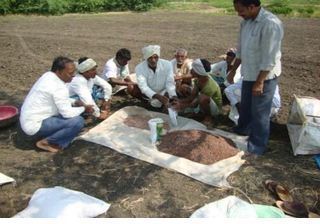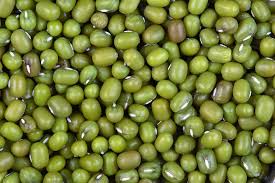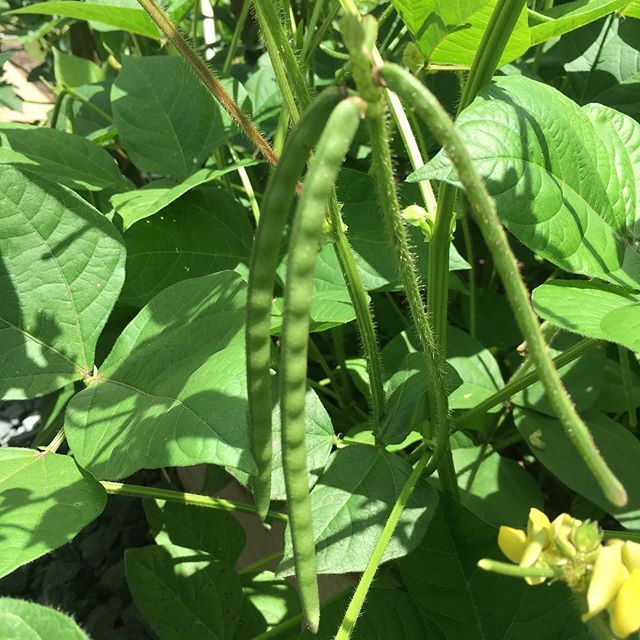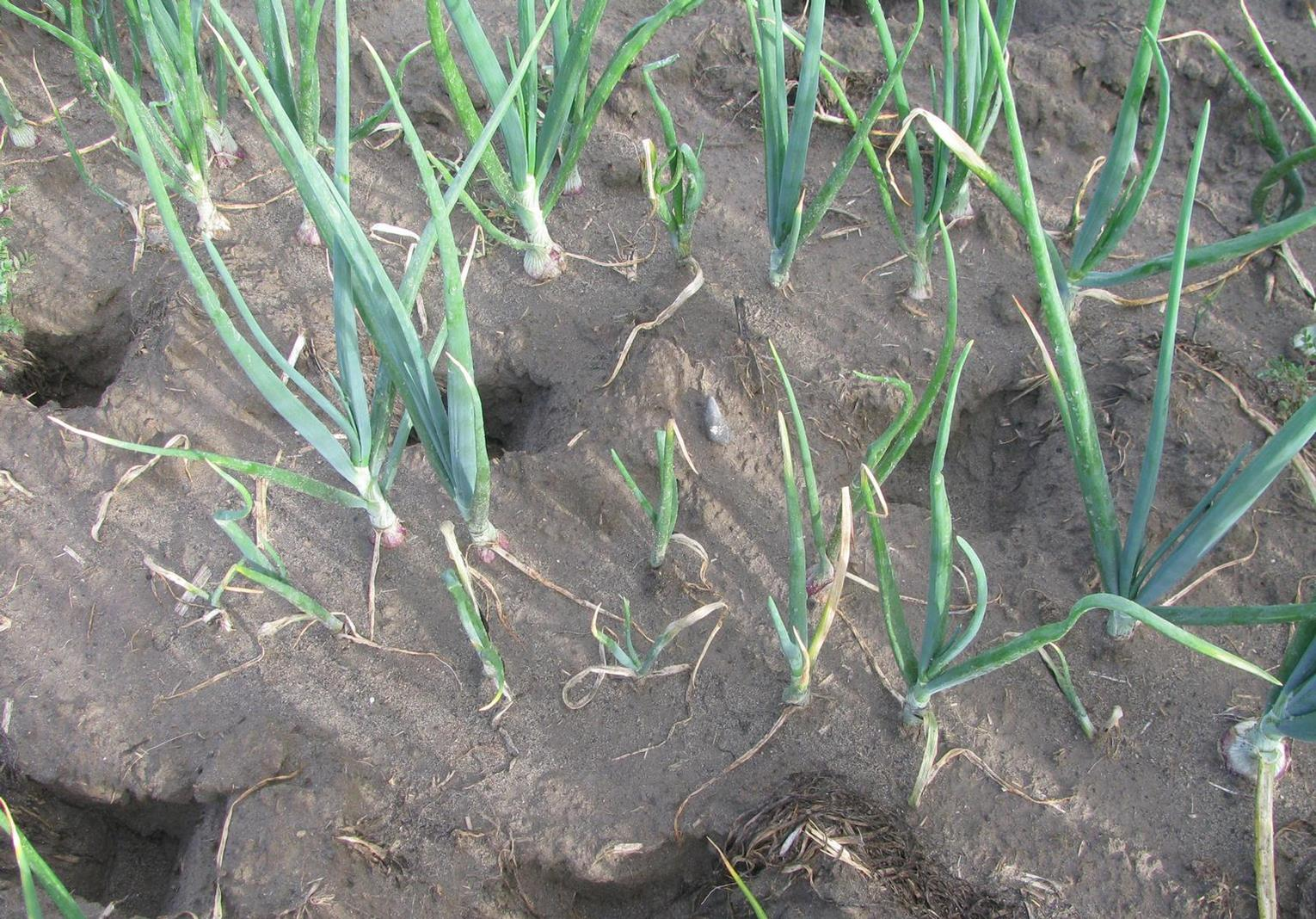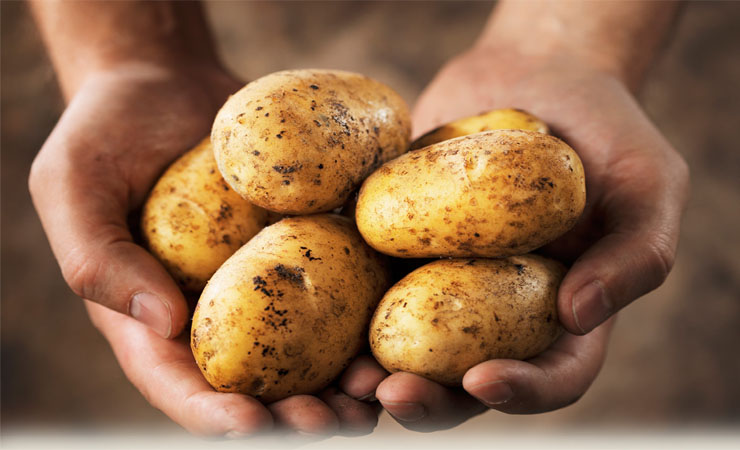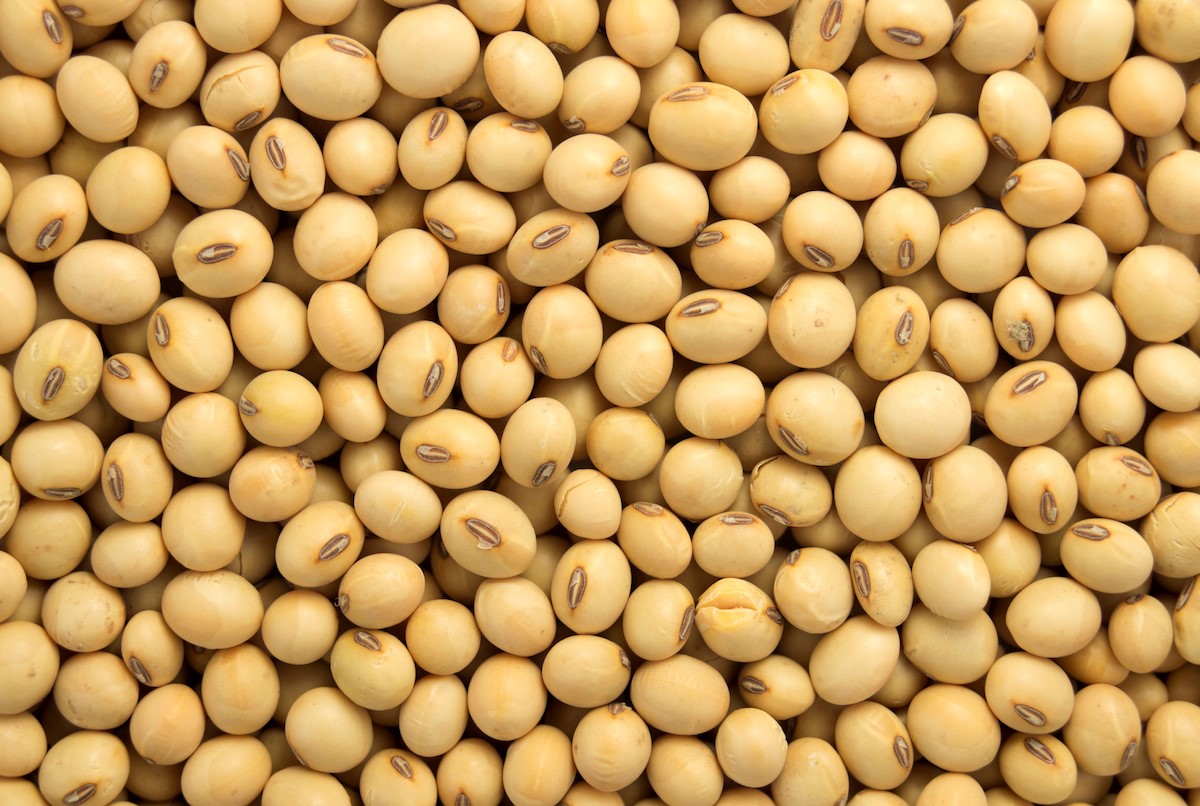- Add 250 grams of jaggery to 1 liter of water and heat it for about 15 minutes and make a solution.
- When the solution cool, add 3 packets (600 grams) of Rhizobium culture to it and stir gently with a wooden stick.
- This solution should be sprinkled slowly on the seeds in such a way that the layer of solution sticks to all the seeds equally. It is enough for 10 kg of seeds.
- Wear the gloves in hands and mix the seeds well and dry them in a shady place. Make sure that the seeds do not stick together.
- Sowing the treated seeds soon.
It’s very important to keep pace with the changing weather
Due to the cyclone made in the Bay of Bengal, it is raining in Central India. According to the Meteorological Department, there’s a possibility of heavy rain with hail in many areas of the country. Light to moderate rains is expected in the eastern and central parts of Madhya Pradesh and North Chhattisgarh in the next 24 hours. Along with this, some areas in Sikkim, West Bengal and southern coastal Tamil Nadu could also witness scattered rains.
In view of the recent changes in the weather, farmers should take the following precautions-
- Maintain the drainage system properly in the field so that the water won’t stop for long in the field.
- During harvesting, do not keep the crops in an open area. Instead, keep it in a splash, room, warehouse or any place where rainwater can’t come.
- Once the sky gets clear, spread the gram, lentil, wheat etc. on a tirpal or plastic sheets and dry it thoroughly for 2 to 3 days so that the moisture content in the grains comes below 12%. Then store it properly.
- To protect the seeds from insects and fungus, clean the stalks, soil, leaves and weeds from the seeds and dry it thoroughly for 2-3 days in strong sunlight, and store them only when there’s just 8-10% moisture left in the seeds.
- Seed treatment with fungicide is necessary before storage, which can lead to cheap and effective control of the seed-borne disease. For this purpose, the seeds should be treated with 3 grams of thyram or captian or 2 grams of carboxin for each kilogram of seed.
- Given the change in weather, many diseases and pests can attack crops because this environment is suitable for them.
- Vegetables of Summer pumpkin group are prone to the attack of red beetle insect. If the number of these insects is high, spray Dichlorovos 76 EC @ 1 gram per litre of water.
- To control juice sucker insects like whitefly, aphid, jassids etc. in okra, spray dimethoate 30 EC @ 1-1.5 ml per liter of water.
- There is a high possibility of Thrips in Onion crop so spray Profenophos 50 EC @ 45 ml or Lambda cyhalothrin 4.9% CS @ 20 ml or Spinosed @ 10 ml or Fipronil 5 SC @ 15 liters water per acre.
- Use 0.5 ml mixture with insecticide in 15 liters of water, so that the insecticide is absorbed by the plants properly.
- Deep ploughing should be done in such time. deep ploughing leads to smooth movement of air in the soil, thereby increasing the water holding capacity in the soil and destroying harmful insect and fungal spores.
Importance of Moong Samridhi Kit`s products
The Gramophone’s Moong Samriddhi Kit has the owing versatile product-
- Incryl: This product is a combination of naturally available ingredients like seaweed and amino acids. This product promotes better growth of the crop by increasing root growth and photosynthesis.
- Tricho Shield Combat: This product contains Trichoderma viridi which is capable of preventing most harmful fungi found in soil. Due to which, the root of the crop is protected from diseases such as root rot, wilt, damping off.
- Combimex: This product is a mixture of two different types of microorganisms which helps to increase the availability of essential ingredients potash and phosphorus to the crops.
- Jai Vatika Rhizobium: This bacteria makes legume in the roots of the pulses crop, which nitrogen fixation from the atmosphere and gives crops an available form.
Watch this video to know how farmers are increasing their production using the moong Samriddhi kit-
ShareGramophone Moong Samriddhi Kit for achieving the best quality moong crop
- All the products included in the Moong Samriddhi Kit are completely organic. Thus, they improve the structure of the soil without damaging the environment.
- This kit works to increase the number of beneficial organisms in the soil and increase the availability of nutrients to the plants.
- Moong Samriddhi Kit helps a lot in destroying harmful fungi and doing important tasks like the growth of roots etc.
- This Kit protects crops from diseases like root rot, dullness, wet rot in the crop.
- This kit increases nitrogen fixation by increasing Rhizobium in the roots.
Watch this video to know how farmers are increasing their production using the moong Samriddhi kit-
ShareIncrease yield of Summer Moong through land and seed treatment
Soil treatment:
- land treatment is very important before starting the agricultural process in summer moong. It helps in destroying harmful pests and fungi present in the soil.
- Mix 4 kg of composting bacteria and 1 kg of Trichoderma Viridi in 6-8 tons FYM and spread it over an acre field.
Seed treatment:
- seed treatment is also very important before starting the agricultural process in summer moong. It helps in destroying harmful fungi and sucking pests.
Mung seeds can be treated with either 2.5 grams of carboxin 37.5% + Thiram 37.5% DS per kg seed or
- They can also be treated using 5-10 grams Trichoderma viridi / Pseudomonas fluorescence and 5 ml imidacloprid 48 FS per kg seed.
Using Gramophone’s Moong Samriddhi Kit will make your land more fertile and suitable for moong crops.
- Gramophone Moong Samriddhi Kit includes all the essential ingredients that are required to get more production from the moong crop.
- The Moong Samriddhi Kit contains various kinds of beneficial bacteria.
- Potash and phosphorus bacteria, Trichoderma viridi, humic acid and Rhizobium bacteria are prominent among these bacteria.
- This kit has been prepared by mixing all these microorganisms.
- The total weight of this kit is 6 kg, and one kit is used for one acre of area.
Seed Treatment of Chickpea (Gram)
- Gram should be treated with carboxin 37.5% + Thiram 37.5% or Carbendazim 12% + Mancozeb 63% at the rate of 2 gm per kg seed before sowing avoids fungal diseases like root rot, Collar rot and damping off.
Like and share with other farmers by clicking on the button below
ShareSeed and Nursery Bed Treatment in Onion
- Before sowing, Onion seed should be treated withThairm 37.5%+Carboxin 37.5% @ 2 g/kg of seed to avoid damage from the damping-off disease. The soil of nursery should also be treated with Carbendazim 12%+ Mancozeb 63% @ 40 g/Pump. The nursery beds should be irrigated 15-20 days before sowing and covered with 250 gauge transparent polythene for soil solarization. recommended to manage damping-off and raise healthy seedlings.
Like and share with other farmers by clicking on the button below
ShareSeed treatment of Potato
Seed treatment of Potato:- Potato a tuberous crop that infects various fungal disease which spread through seed and soil, therefore seed treatment is very important in potato. Potato seed treatment should be done by Carboxin 37. 5% + Thiram 37. 5% @ 200 gm/ 6 litre water for 1 acre seed or Thiophanate Methyl 45% + Pyraclostrobin 5% FS @ 800 ml /16 litre water for 40 quintal seed
Like and share with other farmers by clicking on the button below.
Shareseed treatment in soybean
Soybean Seed Treatment: -Treat the soybean seeds with carboxin 37.5% + Thiram 37.5 WP @ 250 gms per quintal of seed before sowing. or treat the seeds with Carbendazim 12%+ Mancozeb 63% @ 250 gm per quintal of seed or Thiophanate methyl 45%+ Pyraclostrobin 5% FS @ 200 Ml/quintal of Seed. After that treatment treat the seed with Imidacloprid 30.5% SC @ 100 ml/ quintal of seed or Thiamethoxam 30% FS @ 250 Ml/ Quintal of seed gets protection 30 Days from Sucking pest.
Like and share with other farmers by clicking on button below
Share
